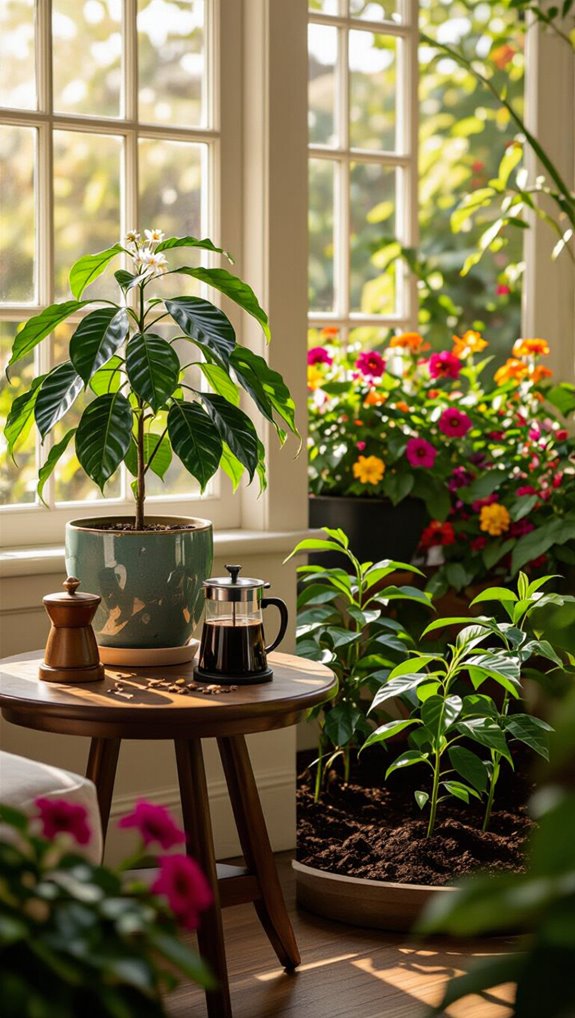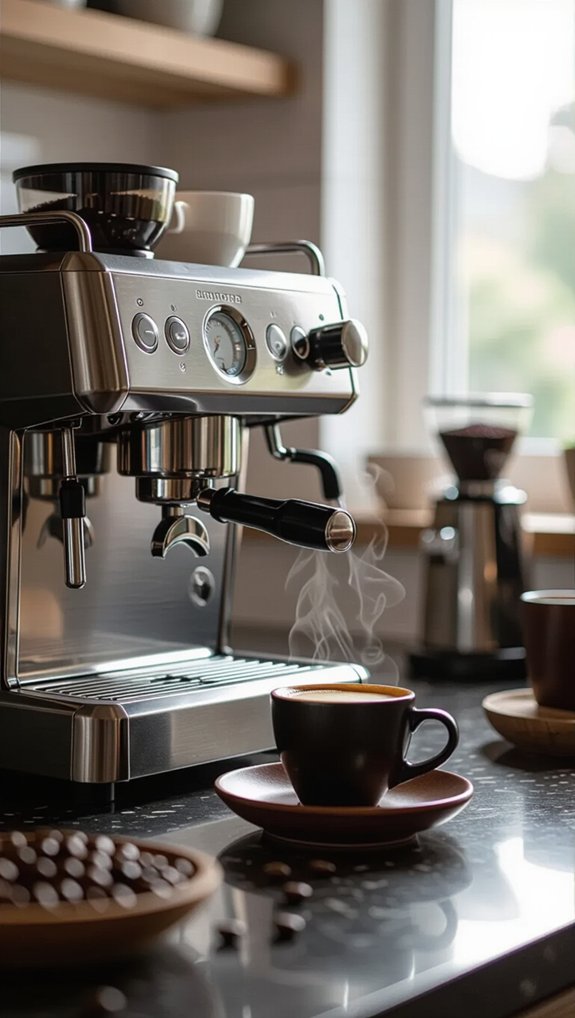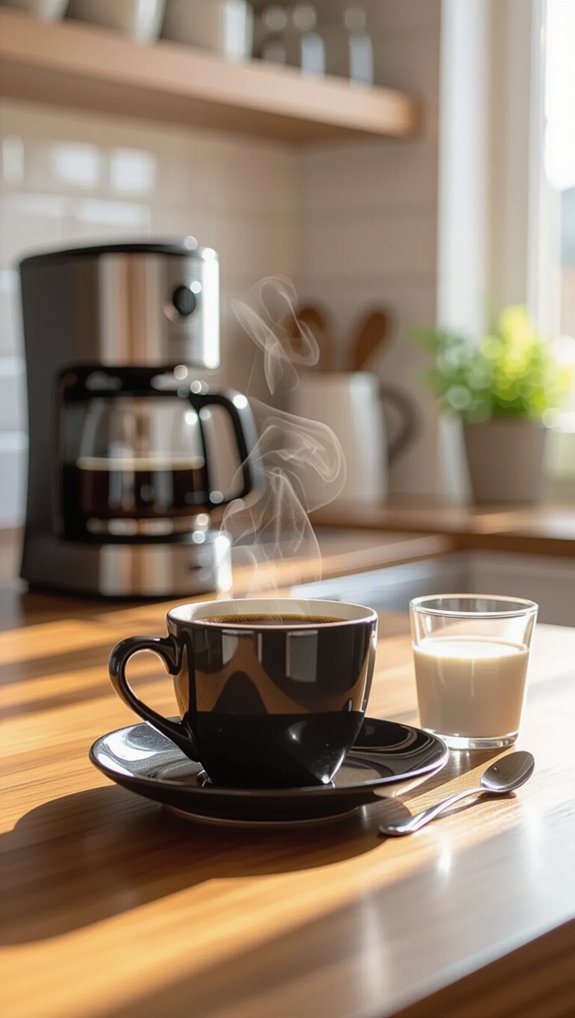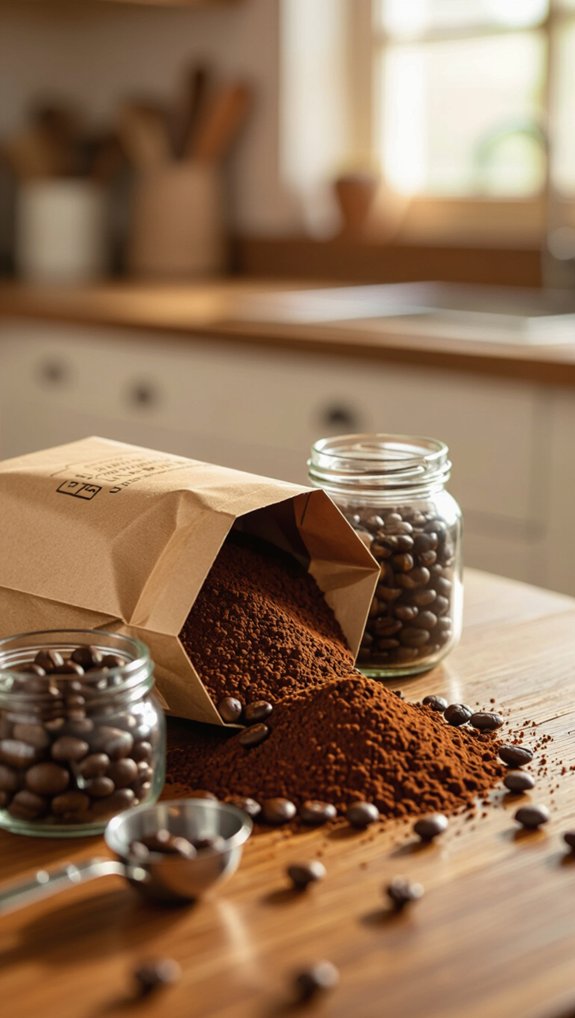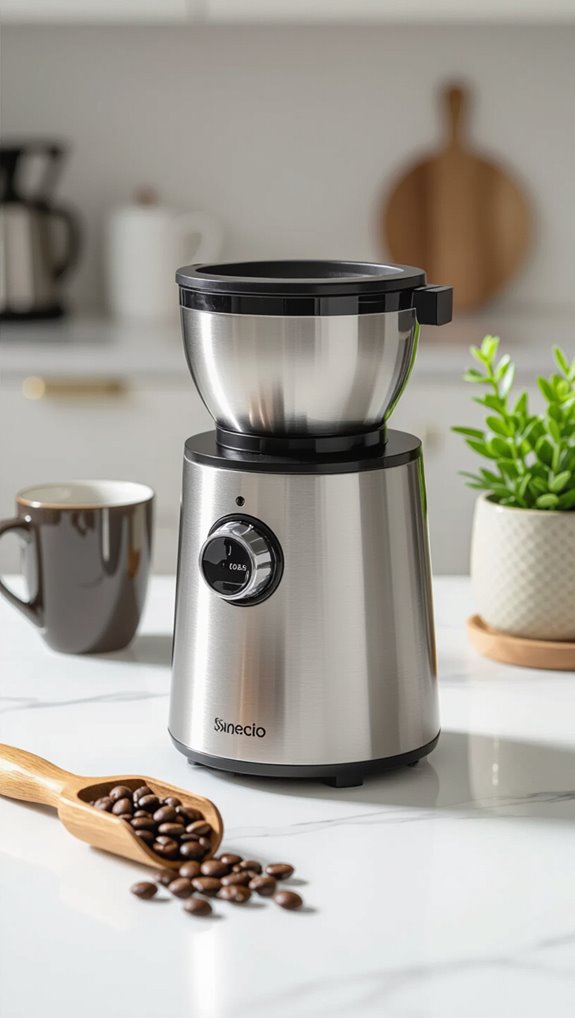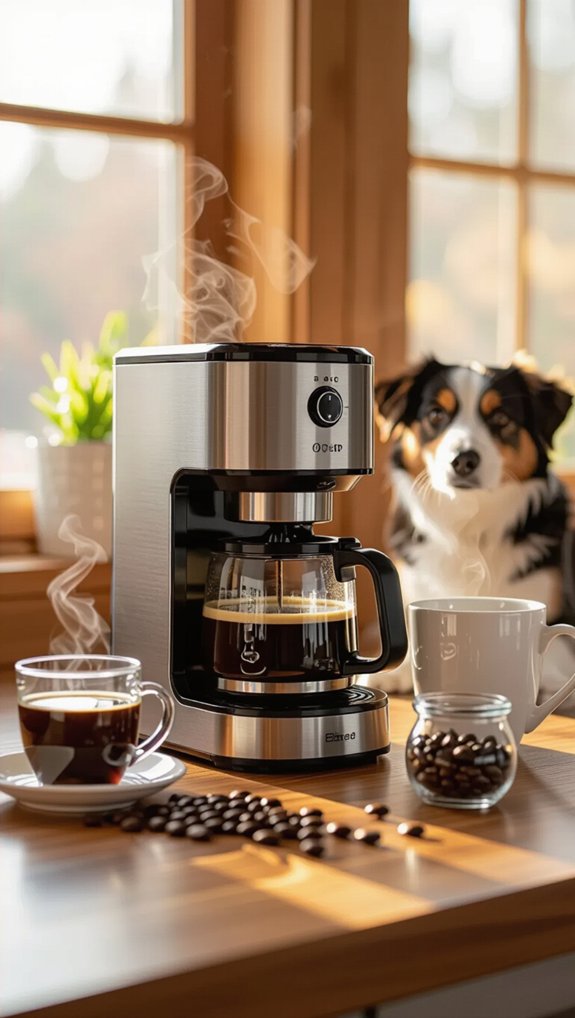Ever wondered if you can really grow your own coffee beans at home? Many coffee lovers assume that cultivating coffee plants requires a tropical climate and professional expertise, but that’s simply not true. With the right knowledge and approach, you can successfully grow coffee beans both indoors and outdoors, no matter where you live.
This comprehensive guide will take you through the entire process of growing coffee beans from start to finish. You’ll discover how to choose the perfect coffee plant varieties, create optimal growing conditions, and maintain healthy plants that eventually produce those precious coffee cherries. We’ll cover everything from seed selection and planting techniques to harvesting and processing your homegrown coffee beans.
Whether you have a sunny windowsill, a greenhouse, or outdoor garden space, you’ll learn practical methods to cultivate thriving coffee plants. By the end of this post, you’ll have all the tools and knowledge needed to start your own coffee-growing journey and enjoy the satisfaction of brewing coffee from beans you grew yourself.
Table of Contents
How to grow coffee beans at home
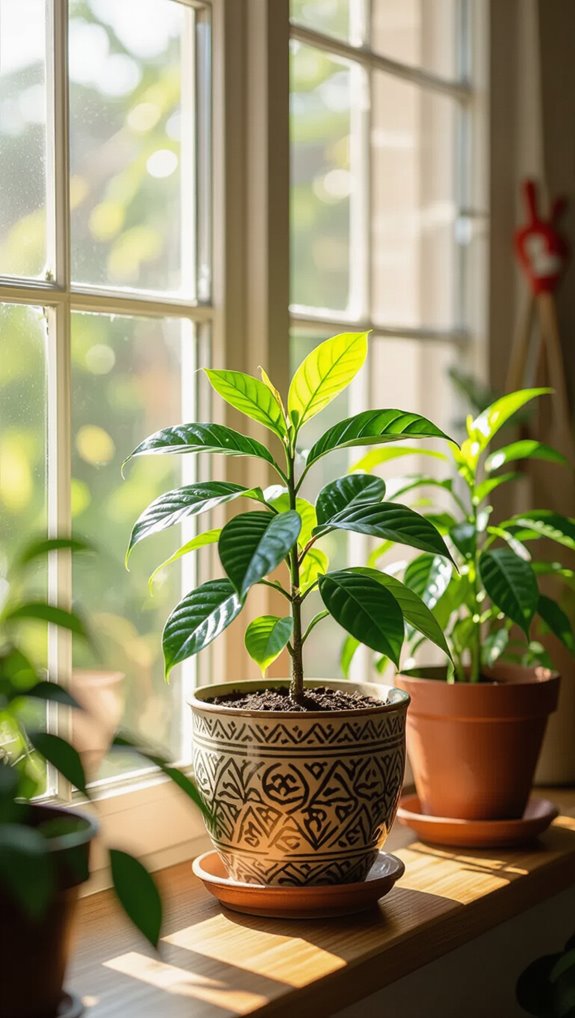
Growing coffee beans at home requires careful preparation and patience, starting with selecting the right Coffea arabica seedling or cutting.
You’ll need specific equipment like a well-draining pot, grow lights, and a consistent environment to nurture your coffee plant from seedling to potential harvest.
I’ll walk you through the essential ingredients, equipment, and step-by-step instructions to help you successfully grow your own coffee beans indoors or in a suitable outdoor setting.
Ingredients
Because successful coffee cultivation starts with the right ingredients, home baristas will want to select their coffee plant materials carefully before diving into this rewarding project.
When indoor coffee plants grow, I recommend starting with freshly processed Arabica seeds or healthy 6″ cuttings from Bourbon or Dwarf varieties. These provide the most reliable propagation.
You’ll need a well-draining, slightly acidic potting mix – I suggest combining 2 parts peat/compost with 1 part perlite.
Choose containers with drainage holes, starting with 1-gallon pots and moving to 5-gallon containers as your coffee plants mature and prepare for fruiting.
Equipment
Now that you’ve selected your coffee plant ingredients, it’s time to set up the right equipment for a successful home coffee cultivation journey.
Growing coffee indoors requires strategic planning:
- Container: Choose a 12-18″ diameter pot with drainage holes, ensuring at least 1 gallon for seedlings and 5+ gallons for fruiting plants.
- Lighting: Install a 24W Sansi screw-in bulb or Aspect Light, positioned 6″ from the plant canopy to provide strong, consistent light.
- Potting Mix: Use a rich, well-draining mix with slightly acidic pH (6-6.5), blending high-quality potting mix, compost, and perlite for optimal root health.
Instructions
If you’re passionate about coffee and dream of harvesting your own beans, you’ll discover that growing coffee at home is both challenging and rewarding.
Start with a healthy Arabica seedling or cutting, planting it in a well-draining, slightly acidic potting mix. Place your plant in bright, indirect light, maintaining warm temperatures between 65–80°F.
Keep the soil consistently moist and provide high humidity by misting or using a humidity tray. Prune your plant to control size, and hand-pollinate flowers to boost yields.
With patience, you’ll enjoy ripe cherries and your very own homegrown coffee beans.
What climate do coffee trees need
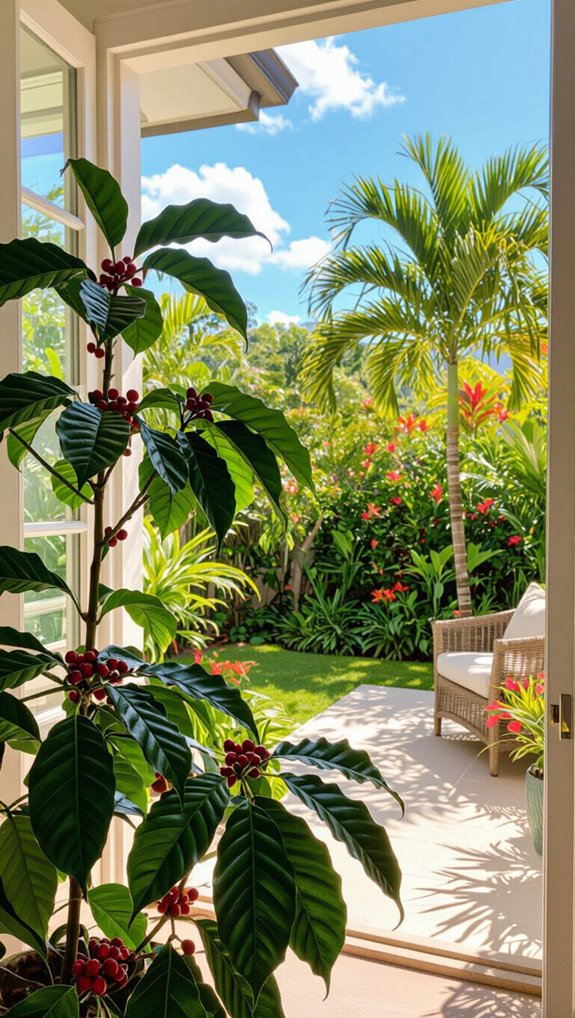
Coffee trees are surprisingly particular about their climate, and you’ll quickly discover they’re not just any ordinary houseplant. When you want to grow coffee in tropical regions, pay attention to these crucial climate factors:
- Temperature Range: Aim for 65–80°F (18–27°C), with acceptable fluctuations between 60–90°F.
- Light Conditions: Provide bright, indirect light or dappled shade, avoiding harsh midday sun that can scorch delicate leaves.
- Humidity: Maintain consistent moisture through indoor misting or selecting humid microclimates that mimic their native highland environments.
These specific climate requirements ensure your coffee tree thrives, whether you’re nurturing it indoors or in a carefully curated outdoor setting.
Should I start seeds or seedlings
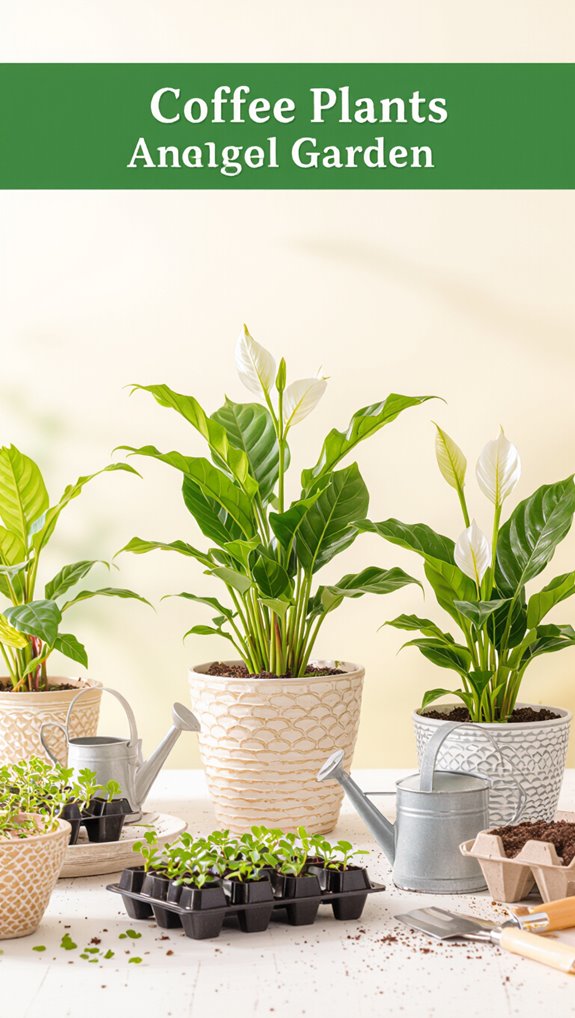
After nailing down the perfect climate for your coffee trees, you’ll want to focus on the most effective way to start your coffee-growing journey. Trust me, seedlings are your best bet. While seeds can work, they’re unreliable and take forever to produce fruit.
I recommend purchasing a bushy, well-established seedling from a nursery. When you bring it home, quarantine it for a week and transplant into a large pot with well-draining soil.
For indoor growers, choose a 5+ gallon container with consistent warmth and bright indirect light. This approach will help you enjoy homegrown coffee much faster.
Best soil, light, water for coffee
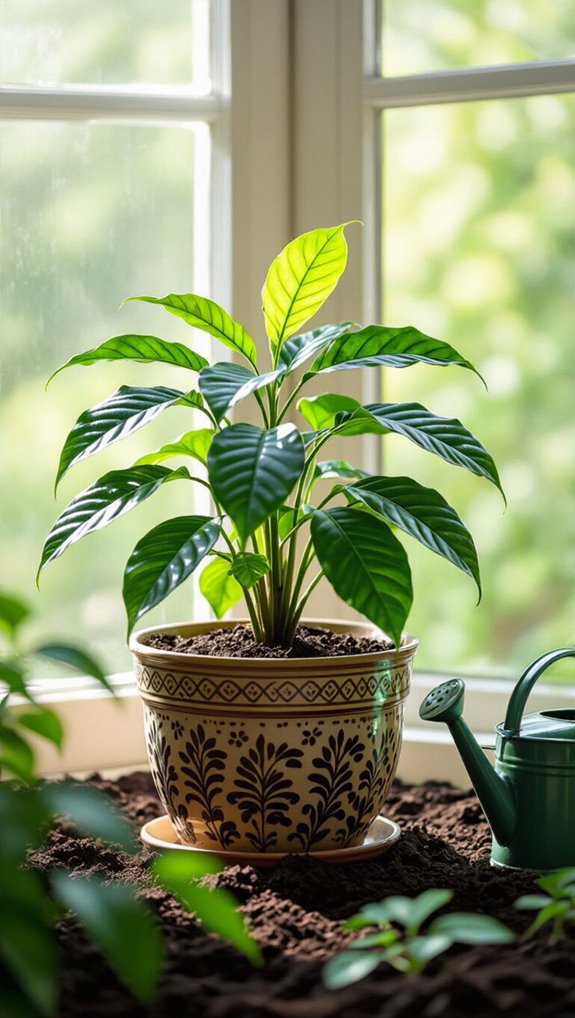
Nurturing coffee plants starts with grasping their foundational needs for soil, light, and water. Your journey to ripe coffee cherries depends on getting these basics right:
- Soil: Use a rich, well-draining mix with slightly acidic pH (6.0–6.5), combining peat, perlite, and compost to keep roots healthy and moist.
- Light: Provide bright, indirect sunlight for 4+ hours daily, supplementing with grow lights indoors to ensure strong plant development.
- Water: Maintain consistent moisture by watering when the top inch of soil dries, avoiding waterlogged conditions that can harm root systems.
Master these elements, and you’ll be on your way to cultivating delicious homegrown coffee.
Can coffee grow indoors year round
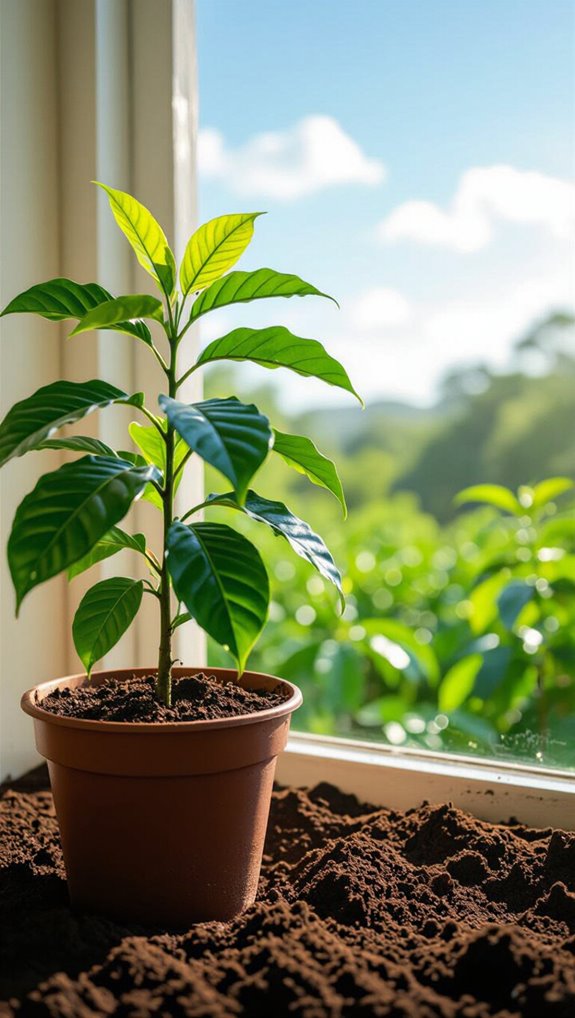
Surprisingly, you can absolutely grow coffee indoors year-round with the right approach and care. By providing consistent warmth between 65–80°F, high humidity, and bright indirect light, you’ll nurture your coffee plant from green to ripe cherries. A grow light helps simulate sunlight, ensuring proper growth and potential fruiting.
Expect small yields after 3–5 years, with just a few cups of homegrown beans annually. Keep soil evenly moist, use well-draining potting mix, and protect against common indoor pests like spider mites. Regular pruning maintains a manageable plant size, making indoor coffee cultivation both possible and rewarding.
How long until coffee trees fruit
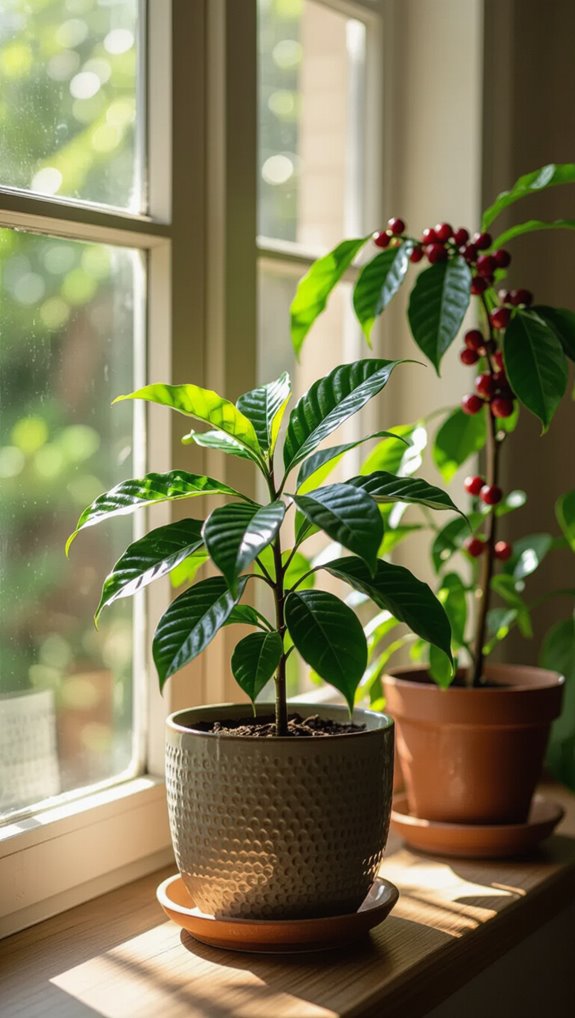
Now that you’ve learned how to nurture a coffee plant indoors, you’ll want to know exactly when those precious beans will start appearing. Here’s what you can expect:
- Most indoor coffee plants take 3–5 years before they’ll produce their first coffee cherries, though patience is key.
- Once flowers are pollinated, it’ll be another 6–9 months before those cherries ripen to the perfect harvesting color.
- Peak production hits around 7–20 years, with plants potentially producing for decades.
When to harvest coffee cherries at home
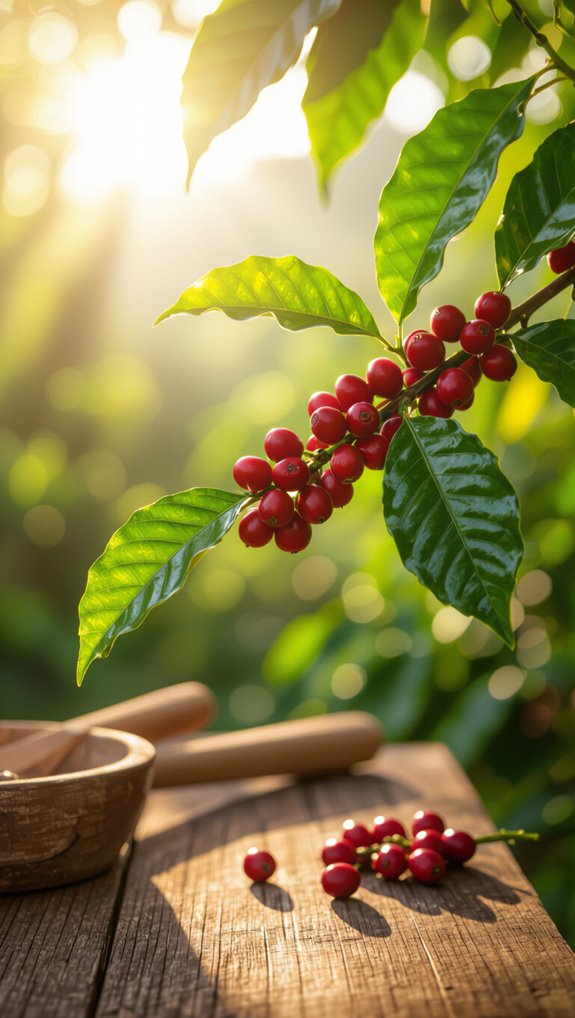
Carefully timing your coffee cherry harvest is crucial to ensuring the best possible flavor and quality.
You’ll want to wait until cherries turn bright red and feel slightly soft—typically 7-9 months after flowering.
Pick only fully ripe cherries, avoiding green or dark purple ones that’ll reduce bean quality.
Since coffee plants have staggered ripening, I recommend harvesting in multiple passes over several weeks to capture peak ripeness.
Each cherry contains roughly two beans per fruit, so handle them gently, twisting or pinching them off stems to prevent bruising.
Process or dry cherries quickly to maintain freshness.
Process, dry, and roast your beans
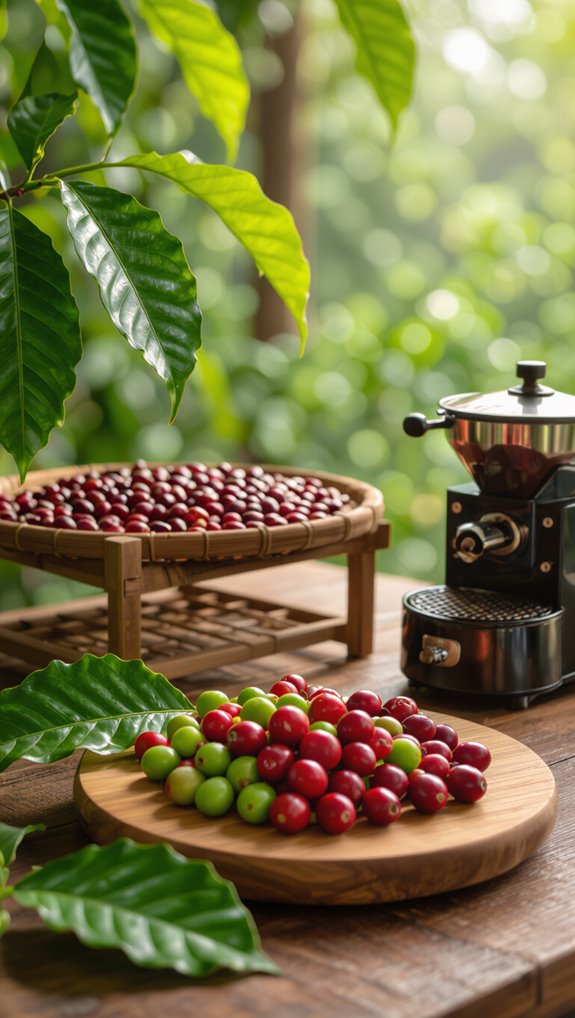
Once you’ve harvested your coffee cherries, you’ll want to dive into processing, drying, and roasting—transforming those raw fruits into the aromatic beans that’ll eventually brew your perfect cup.
Here’s how to nail the process:
- Pulp cherries within 24 hours by squeezing or fermenting, then wash thoroughly to reveal green beans.
- Dry beans on raised beds or trays, turning regularly and protecting from direct sun until moisture reaches 10–12%.
- For home roasting, use an air roaster or skillet, monitoring bean color and temperature to achieve your desired roast level.
Cool beans quickly after roasting, let them rest, and store in an airtight container to preserve their rich flavor.
What taste to expect from homegrown coffee
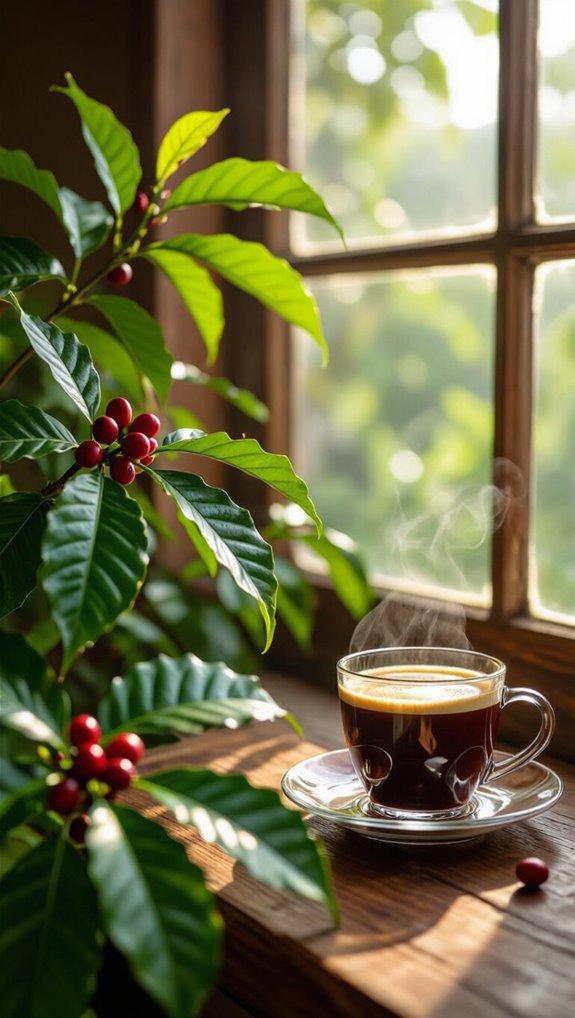
You’ll quickly discover that homegrown coffee offers a uniquely personal flavor journey, quite different from mass-produced commercial blends.
Small-batch harvesting means each cup will have its own character—potentially brighter, less uniform, but wonderfully complex. The bean variety matters hugely: Arabica will deliver sweeter, more nuanced flavors with floral and fruity notes, while your roasting technique dramatically influences taste.
Light roasts preserve delicate acidic qualities, whereas darker roasts develop rich chocolate undertones. Expect high-quality, homegrown coffee to be an adventure in taste, with each batch telling its own delicious story.
Prevent pests, diseases, and nutrient issues
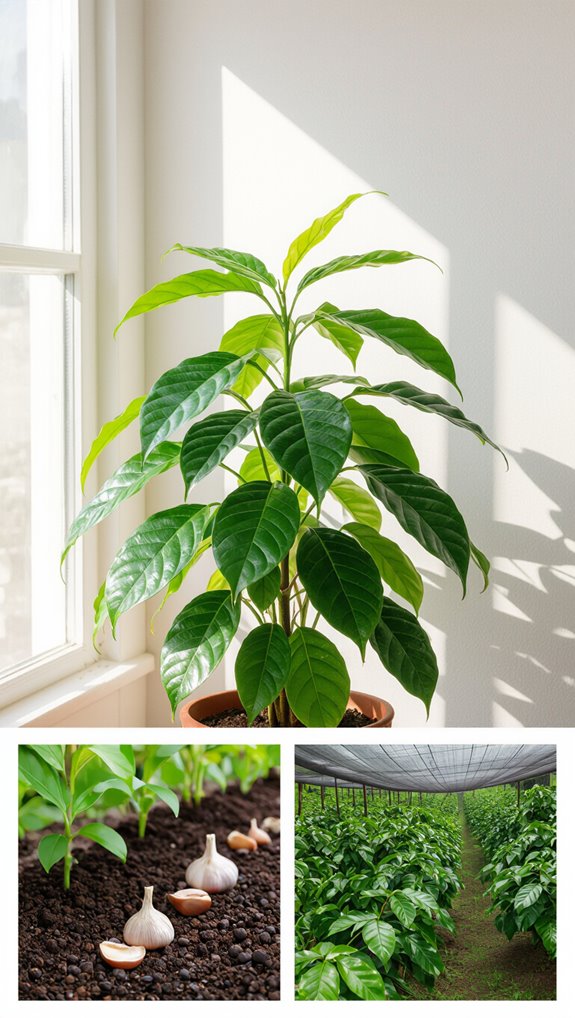
After savoring the unique flavors of homegrown coffee, protecting your precious plants becomes the next critical step in your coffee-growing journey. I’ve learned that maintaining healthy coffee plants requires strategic care:
- Inspect new plants weekly for early pest detection, looking for telltale signs like tiny webbing or sticky residue.
- Prevent root rot by using well-draining soil and containers with drainage holes, watering only when the top inch of soil feels dry.
- Maintain steady temperatures between 65–80°F and consistent humidity to reduce plant stress and vulnerability to diseases.
Frequently Asked Questions
Can You Grow Coffee Beans Indoors?
Yes, I can grow coffee beans indoors! It’s a slow process that’ll take 3-5 years, but you’ll need bright indirect light, consistent warmth, good drainage, and patience for a few small harvests each year.
How Long Does It Take for Coffee Beans to Grow?
I’ll take several years to grow coffee beans. From planting to first harvest, expect 3-5 years of growth. Once mature, my coffee plant can produce 2-3 pounds of beans annually, with full production taking up to 7-20 years.
Is It Legal to Grow Coffee in the US?
Yes, it’s legal to grow coffee in the US. You’ll need to check local regulations for specific restrictions, especially if importing plants or seeds. Some areas like Hawaii and parts of Florida are ideal for coffee cultivation.
What Month Is Best to Plant Coffee?
I recommend planting coffee in spring (March–May) indoors or outdoors. If you’re using grow lights, you can start anytime, but spring syncs best with natural light cycles and helps establish healthy young plants.
In Conclusion
Growing coffee beans at home is an incredibly fulfilling experience that connects you directly to your favorite beverage. Whether you’re wondering how to grow coffee beans indoors with proper lighting and temperature control, or you’re planning an outdoor coffee garden in a suitable climate, the journey from seed to cup offers unmatched satisfaction. With consistent care, appropriate soil conditions, and patience through the 3-5 year maturation process, you’ll eventually harvest your own coffee cherries.
While you’re nurturing your coffee plants and waiting for that first homegrown harvest, you’ll still want to enjoy exceptional coffee daily. Consider checking out our coffee machine reviews to discover top-rated equipment that will help you brew the perfect cup using premium beans. The combination of growing your own coffee and investing in quality brewing equipment creates the ultimate coffee experience that any enthusiast will treasure.

